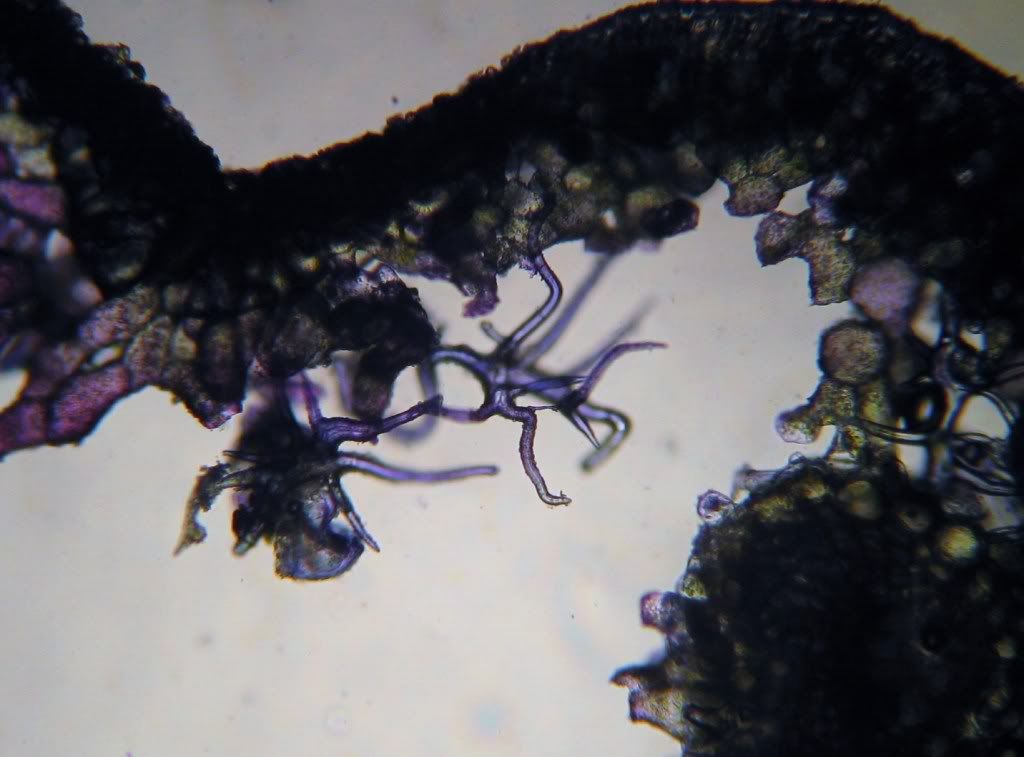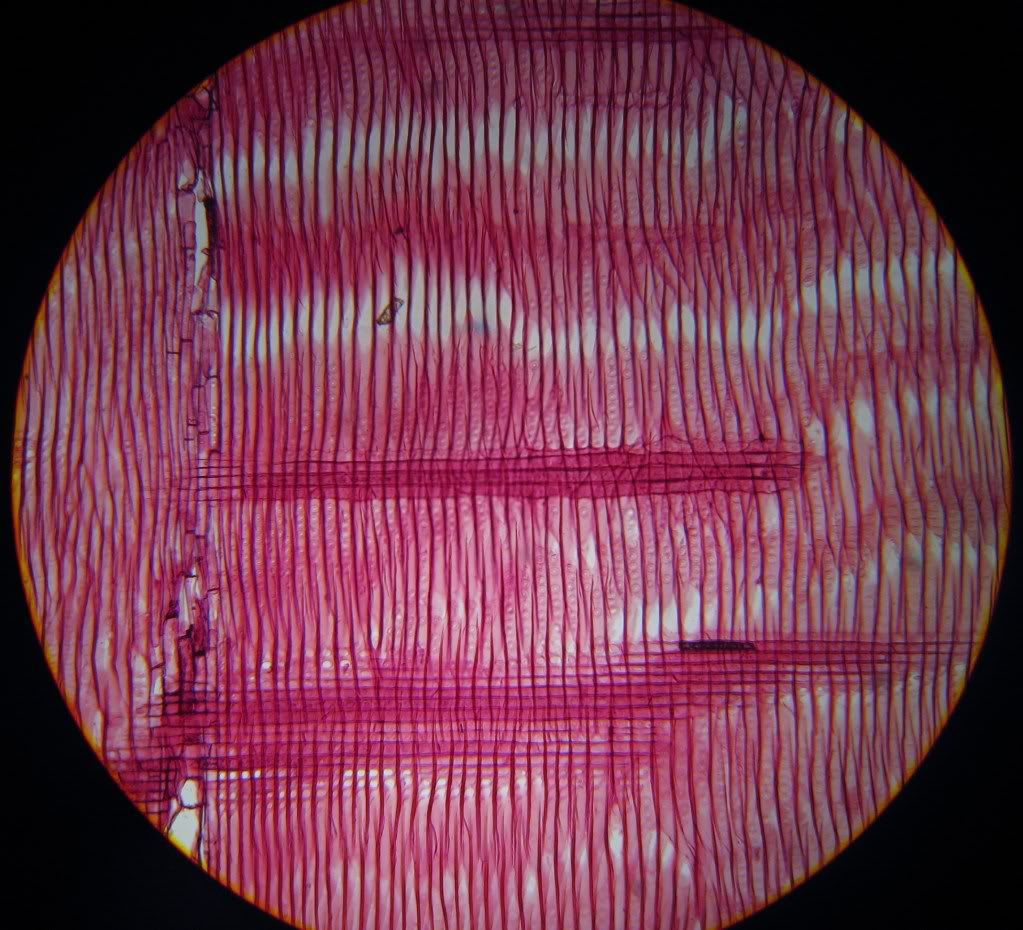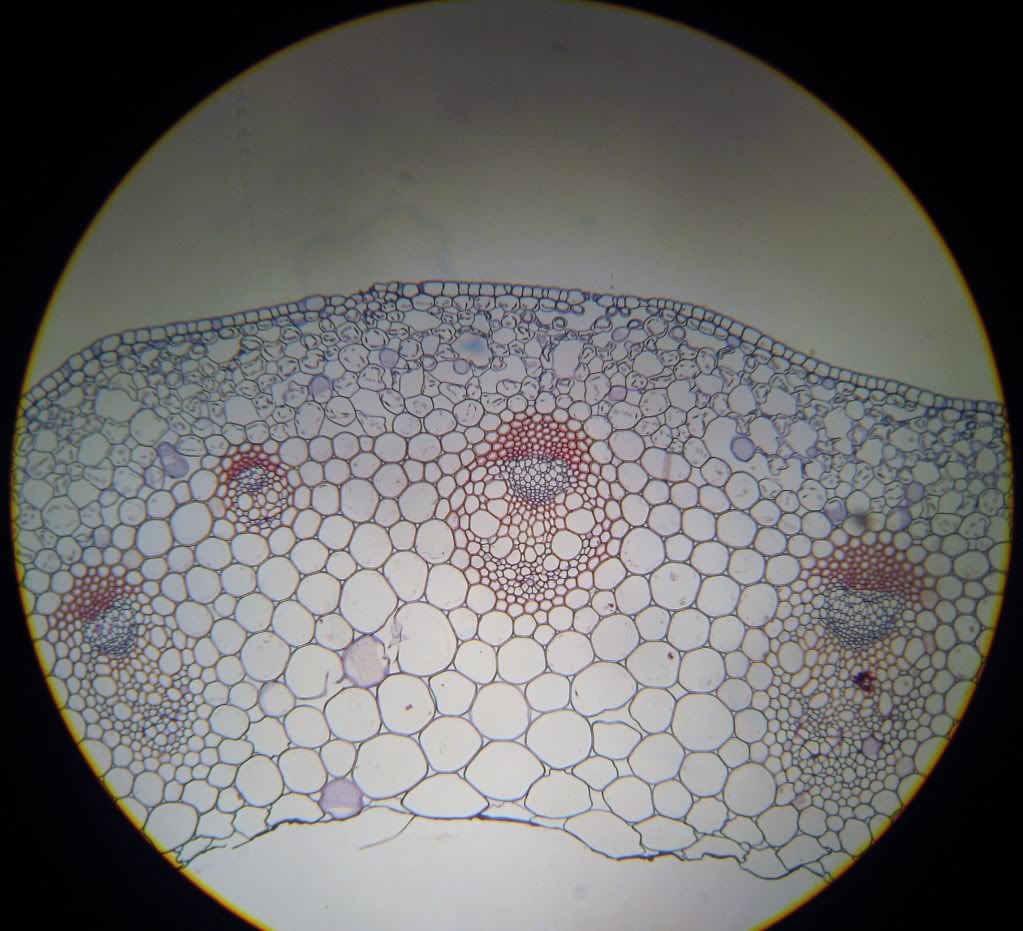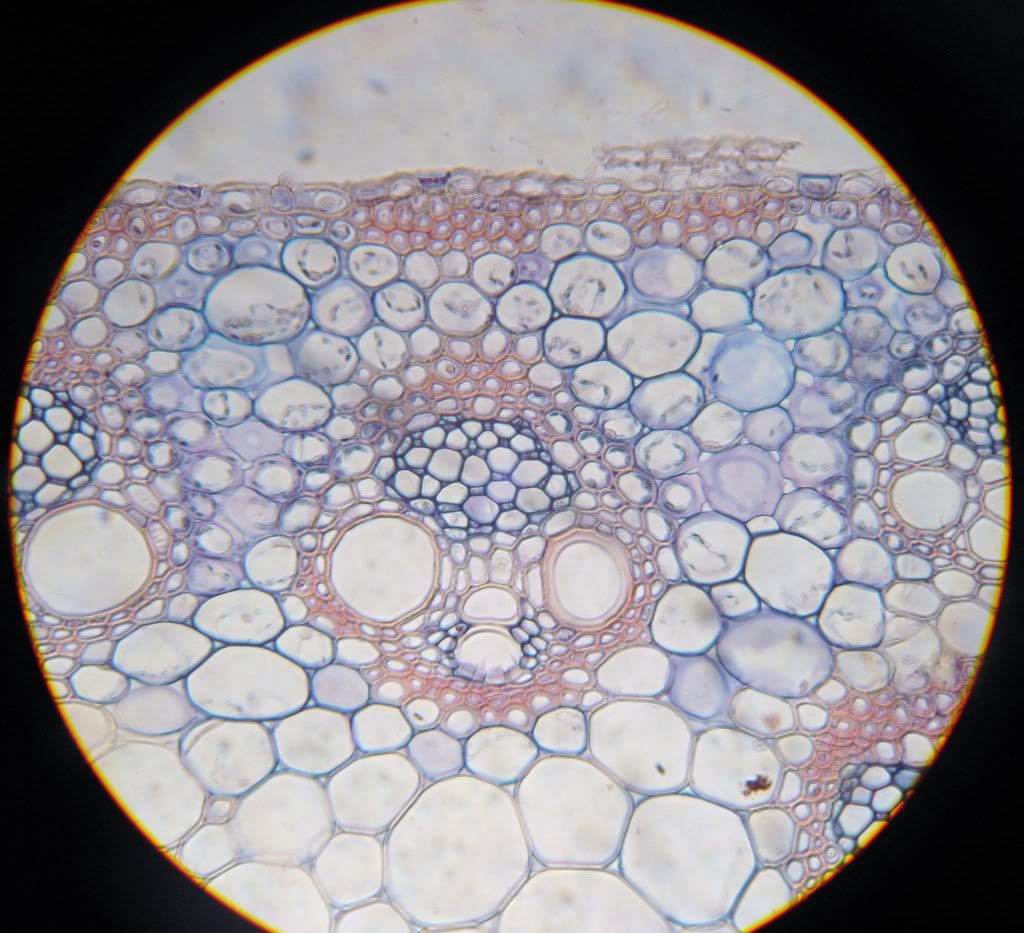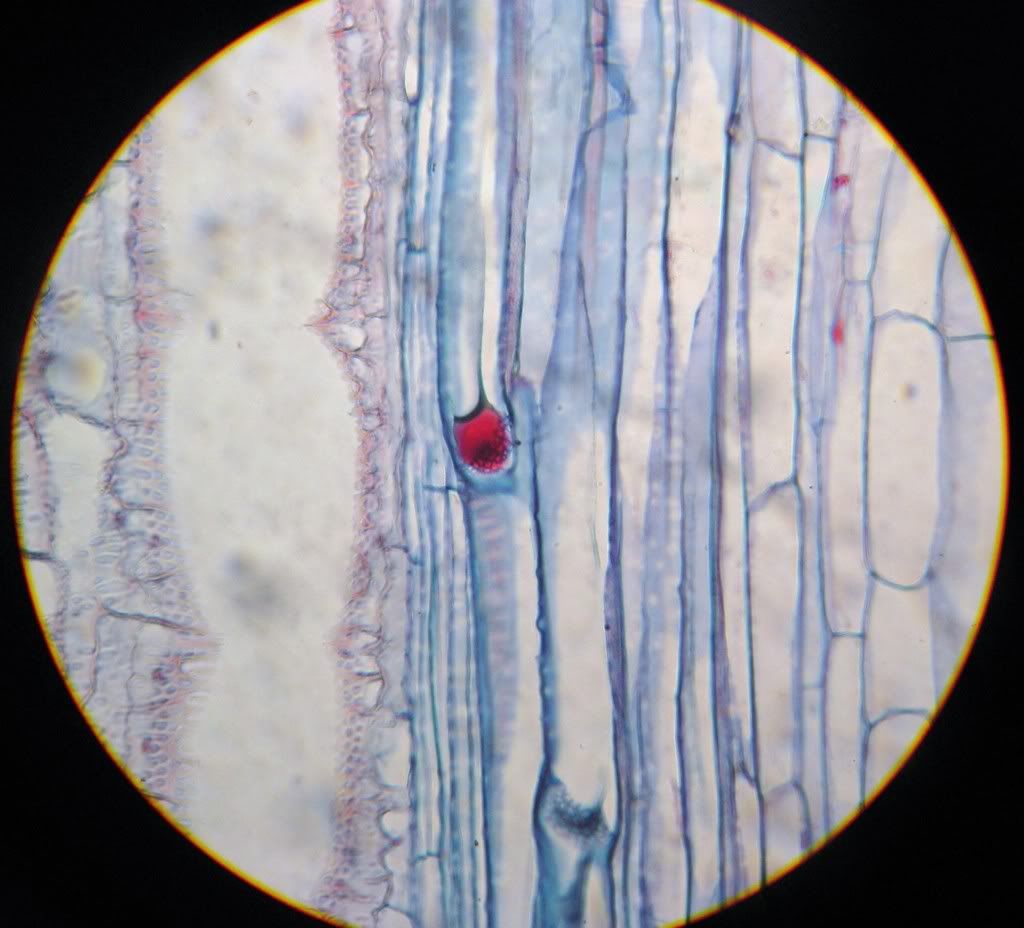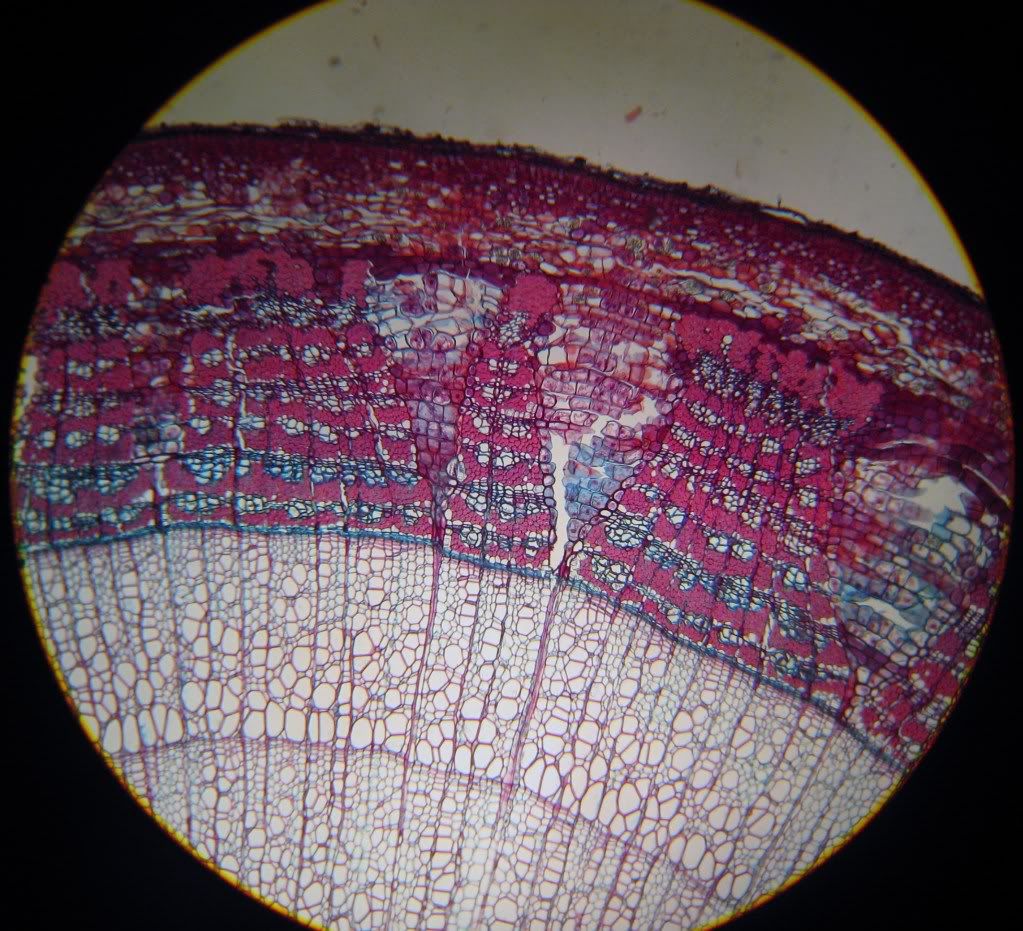Ground Tissue System
I. Parenchyma
---
IKI stained section of an onion (Allium cepa). The large circular cells are parenchyma cells and the red arrow is pointing at a nucleus. One of the many functions of parenchyma cell is storage, but shouldn't starve turn purple when stained with IKI? It turns out the nutrient here is in the form of sugar and not starch.
IKI stained section of an onion (Allium cepa). The large circular cells are parenchyma cells and the red arrow is pointing at a nucleus. One of the many functions of parenchyma cell is storage, but shouldn't starve turn purple when stained with IKI? It turns out the nutrient here is in the form of sugar and not starch.
The above the an IKI stained potato section. The cells are parenchyma cells and stain a dark purple because of their high starch content.
II. Collenchyma
---
The cell walls of the collenchyma cells turned a bright purple after stained with toluidine blue. Why do they turn purple and not blue? because they do not contain lignin.
Layer of angular collenchyma cell in Sambucus (elderberry) stem.
III. Sclerenchyma
After staining with tol blue the fibre cells turned a baby blue which indicates lignification in the cells.
Sclereids from Pyrus communis (pear) after staining with phloroglucinol. The cells are supposed to turn red or pink, but they appear more orange.
Branched sclereid of Sciadoptiys verticillata (Japanese Umbrella Pine) needle. The sclereids look like little elves hiding behind green bushes.
The branched sclereids turn blue after staining with Tol blue indicating their walls are lignified.
The branched sclereids turn blue after staining with Tol blue indicating their walls are lignified.
Vascular Tissue System
IV. Xylem
---
Can you name all the structures in this Pinus (pine) wood section?
The longitudinally elongating structures are the parenchyma of rays. The long vertical cells with the pores are tracheids and the pores are called 'pits'
Another longitudinal section of the pine wood.
A cross section of the pine wood. Where are the rays in this section? And what are the two big holes (one in the centre and the other on the top left)?
The rays are the thick vertical lines and the holes are actually resin ducts (not covered yet).
Can you name all the structures in this Pinus (pine) wood section?
The longitudinally elongating structures are the parenchyma of rays. The long vertical cells with the pores are tracheids and the pores are called 'pits'
Another longitudinal section of the pine wood.
A cross section of the pine wood. Where are the rays in this section? And what are the two big holes (one in the centre and the other on the top left)?
The rays are the thick vertical lines and the holes are actually resin ducts (not covered yet).
Stained longitudinal sections of Solenostemon scutellarioides (coleus) stem. Check out the helical/spiral secondary walls! The 2 above sections are courtesy of Debbie.
Ranunculus (buttercup) prepared slide section.
Ranunculus (buttercup) prepared slide section.
V. Phloem
A prepared slide of Cucubita (squash). The red structure is a "Slime" plug (p-protein). The dark smudge on the slime plug is the sieve plate.
Dermal Tissue System
VI. Epidermis
---
---
An epidermal peel of the Tradescantia (spiderwort) reveals some of the cells from the dermal tissue system.
The structure in the centre is the stomatal apparatus and the others are parenchyma cells.
A closer look on higher magnification reveal the stomatal opening and guard cells dotted with chloroplasts. Cells in the plant surface usually do not have chloroplasts (chloroplasts are found in mesophyll cells which are part of the ground tissue system and beneath the dermal tissues).
A few trichomes are shown in the above, which is the aglandular and which is glandular?
The structure in the centre is the stomatal apparatus and the others are parenchyma cells.
A closer look on higher magnification reveal the stomatal opening and guard cells dotted with chloroplasts. Cells in the plant surface usually do not have chloroplasts (chloroplasts are found in mesophyll cells which are part of the ground tissue system and beneath the dermal tissues).
A few trichomes are shown in the above, which is the aglandular and which is glandular?
Photo from epidermal peel of Pelargonium (geranium) leaf.
-MIDY












